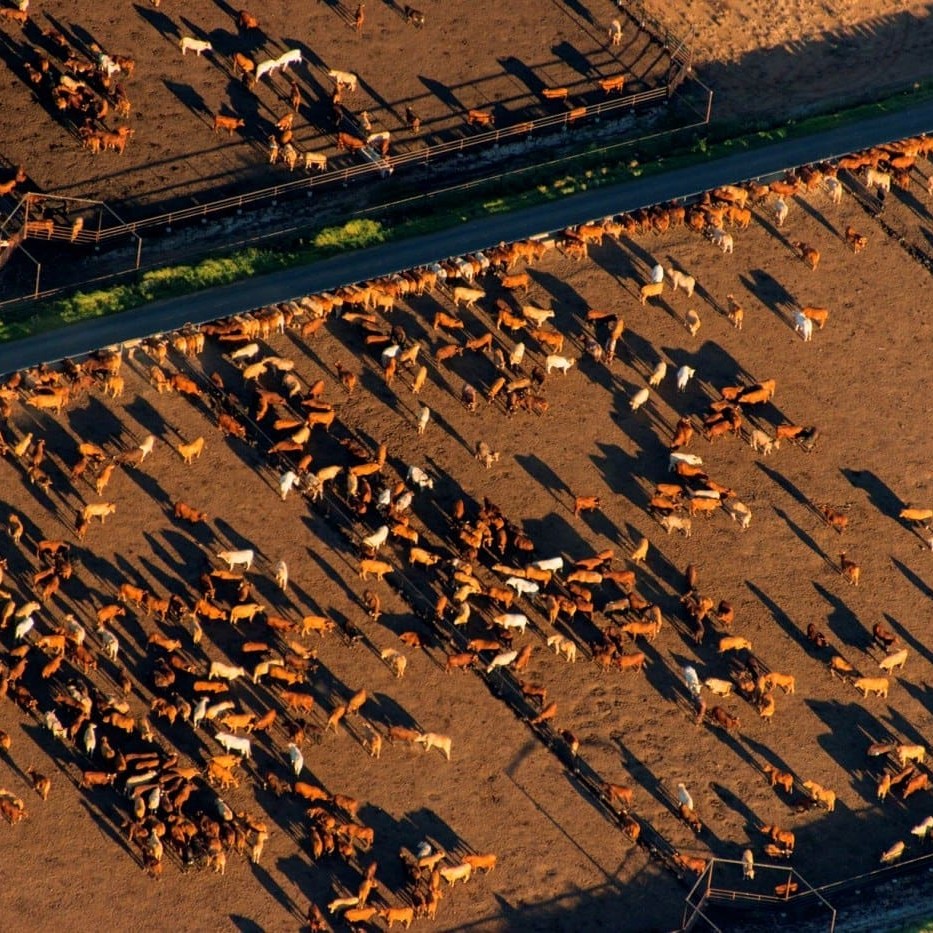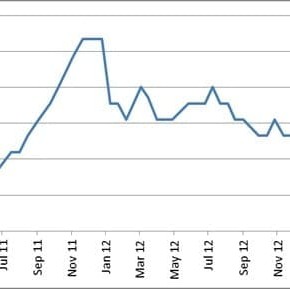Prospects for lotfeeding 100-day grainfed cattle improved a little further in Beef Central’s latest trading budget calculated yesterday.
But the gains clearly come as a direct result of the big declines in feeder cattle price brought on by heavy drought-induced cattle supply pressure.
Using our standard set of variables (see criteria at bottom of page), our latest breakeven produced a trading loss of minus-$17 on flatback steers going on feed on Queensland’s Darling Downs yesterday, and closing-out after 105 days on August 13. That’s a $5/head improvement on a negative-$23 result calculated in our last breakeven on April 4.
 As recently as March 8, Beef Central’s trading budget was still showing a minus-$50 outcome on feeding 100-day cattle.
As recently as March 8, Beef Central’s trading budget was still showing a minus-$50 outcome on feeding 100-day cattle.
The clear driver of the improved position on lotfeeding profitability is the big shift seen recently in feeder cattle prices, as the impact of drought extends across large parts of Eastern Australia.
For today’s regular trading budget, the feeder steer buy price ex Darling Downs has been lowered again to 160c/kg, on the basis of continued parched conditions in western areas of NSW, Victoria and Queensland.
That’s back 5c/kg on our last calculation and 15c/kg on early March.
It should be mentioned, however, that feeder price does appear to vary significantly between yards at present, impacted by the numbers currently on feed, and available space. More custom feeding demand/occupancy due to drought means feedlot operators themselves are less active in procurement, further lowering demand for flatback feeders.
Another aspect is the fact that higher Indicus cattle might be trading at 10-15/kg below that 160c/kg level, and depending on the ‘blend’ of flatbacks/higher indicus in each yard required to fill different orders, some feedlots may easily be 5-7c/kg below this figure, on average purchase price.
The reduction in c/kg price values today’s 450kg flatback feeder steer at $720, back another $20 on three weeks ago – easily the lowest feeder price seen in the past 23 months.
The graph published below shows the big decline in feeder steer value, on a $/head basis, since Beef Central started collecting data for its fortnightly grainfed trading budget back in May, 2011. The feeder market peaked back in November/December 2011 at $967.50, before beginning its current longer-term downwards trend, exacerbated recently by drought. The slide means feeder steers meeting our chosen spec have now fallen almost $250 in value in the past 16 months. That’s 25.5 percent, that’s been lost to the production sector.
Big impact on breeder/backgrounder
 Let’s change tack for a moment to look at the impact of that from the breeder/backgrounder’s perspective.
Let’s change tack for a moment to look at the impact of that from the breeder/backgrounder’s perspective.
Backgrounders were active back in September/October, buying suitable steers to grow out to feedlot entry weights at around 200c/kg, or $600 for a 300kg liveweight steer.
Assuming those steers are now at feedlot entry weight of 450kg (240 days x 0.65kg/day) those steers today are worth $720, based on today’s breakeven assumptions.
Effectively, that means the steer value has increased just $120 in 240 days, or 50c/day ($3.50/week).
But that figure is gross – extract sundry costs including holding cost at 8pc interest ($30), animal health ($20), freight to feedlot ($20) reduces the profit to just $50/head, or $1.45/week.
And keep in mind that is before any labour, fuel and other operating expenses.
In essence, this means for the backgrounder, they have made $50/head for the summer, before paying school fees, buying a load of diesel, or other production/living costs. Spread that over a typical medium-sized backgrounding business growing-out 1000 head, and it has made just $50,000 gross on which to run its business.
That little equation is a big part of the reason why the buy side of the market is so lacklustre at the moment, in Beef Central’s opinion.
Ration price unchanged
Getting back to this week’s breakeven, we’ve kept the ration cost the same as last time at $295/t. There is still some variance in finished ration prices evident among downs feedlots yesterday, however, with quotes from the mid $280s to +$300/t.
That ration price of $295/t attributed in today’s budget represents a total feeding cost over 105 days of $462 on our trading steer, down $8 on early March figures. Total production cost is calculated at $1270, down $23 on our April 4 calculation due to change in steer value, and down $85 on March, week-two.
Cost of gain, using our chosen variables (2kg/day ADG, for 210kg gain over 105 days) is unchanged 220c/kg, from 228c/kg six weeks ago.
This time last year, the cost-of-gain was 183c/kg on a $245/t ration price, about $50/t or 18pc lower than today’s figure. Feeders back a year ago were worth 197c/kg, however.
The variables outlined above deliver a breakeven figure in today’s budget of 360c/kg – a further 7c/kg drop on our last figure, and a 40c/kg drop on a breakeven figure of 400c/kg calculated in mid-January.
That’s the lowest breakeven figure produced for this dataset, using the same variables, stretching back two years. The previous low breakeven figure was a 362c/kg figure generated back in July, 2011.
Forward pricing
Current forward public grid prices for 100-day ox from Southeast Queensland processors for August, week three, are around 355c/kg dressed, down 5c from last time.
Again, the 355c/kg figure is the lowest forward price for 100-day ox seen in this report since May 2011, when a 350c figure was published (briefly). The current figure reflects over-production of grainfed cattle into the traditional shortfed market, largely due to the large numbers of drought-impacted cattle going on feed towards the end of last year, and now at, or approaching close-out.
All that suggests a trading loss on Beef Central’s regular variables today of minus-$17.
Given that many commercial yards are now feeding a mix of flatbacks and cheaper higher-Indicus cattle because of the seasonal/supply situation, many may be closer-to, or at an ‘all-square’ position, however.
15c/kg spot advantage over earlier forward contracts
Looking backwards, at 100-day cattle that went on feed on January 10 for slaughter this week, forward-contract meatworks rates then were around 375c/kg. The spot market today ex southern Queensland is more like 360c/kg, giving the spot purchase a 15c, or $53 advantage over cattle bought forward back in January.
- Beef Central's regular 100-day grainfed breakeven scenario is based on a representative standard set of production variables, ex Darling Downs. They include a 450kg liveweight feeder steer fed 105 days; 356kg dressed weight at slaughter; ADG of 2kg; consumption 15kg/day and a NFE ratio of 7.5:1 (as fed); $25 freight; typical implant program. Bank interest is included. It is important to note that variations exist across production models (feed conversion, daily gain, mortality, morbidity, carcase specification); from feedlot to feedlot; and between mobs of cattle. For a more specific performance forecast on a given mob of cattle, consult with your preferred custom feeder.



HAVE YOUR SAY